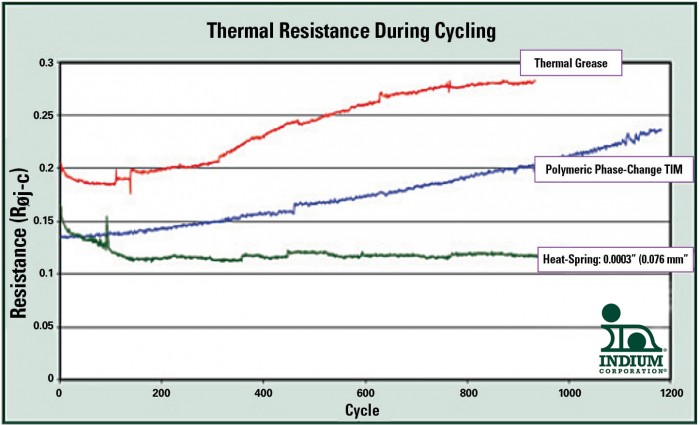Sure, we’ve all heard how some wines and cheeses get better with age. Did you know that some thermal interface materials perform better after their first few hundred power cycles as well?
I remember sitting around a table with a few engineers who were designing the cooling assembly for a new high-end GPU (this was back around 2006). I was accompanied by a metallurgist who had done extensive thermal cycling with many different thermal interface materials. The engineers did not see any need to use a different thermal interface (like an indium Heat-Spring®) because the grease they were using at the time had a resistance that was just within the acceptable threshold for the product. After asking a few questions, we learned that this group of engineers had only tested the interface immediately after assembly: time=zero.
At that point, our metallurgist showed the engineers a graph very similar to the one shown here. The engineers paused, and then mentioned that they did not expect that the thermal resistance would change over time. They had not accounted for the “pump out” that happens as grease goes through hundreds of thermal cycles, and they did not know that the heat transfer of indium improves over time.
Don’t let pump-out compromise your thermal assembly.
Contact our engineers for more information on better thermal interface materials: AskUs@Indium.com
~Jim


